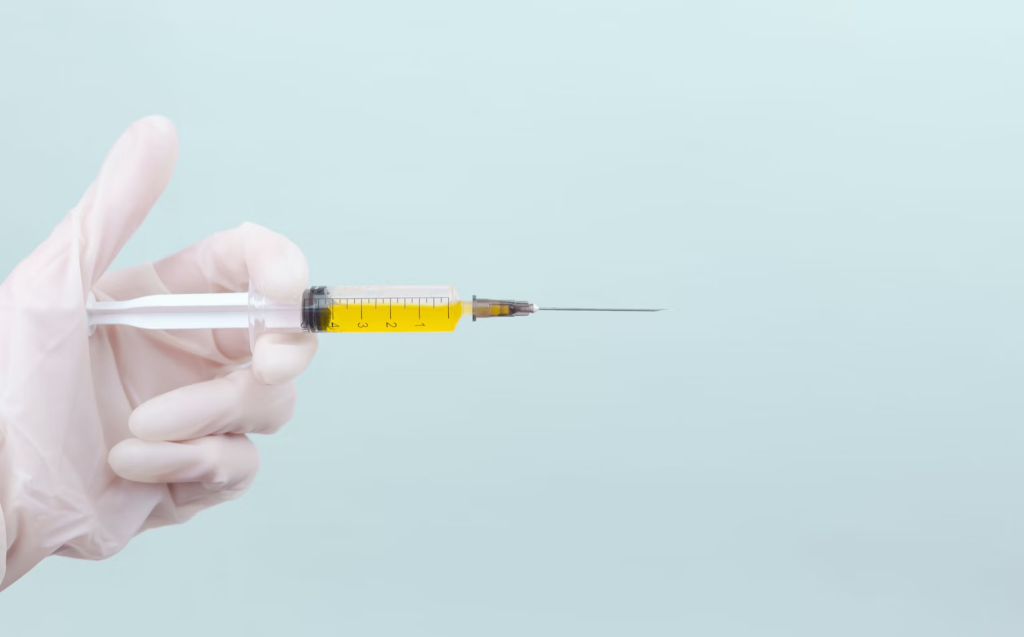MJACUPUNCTURE
Health and Fitness Blogs
Nam imperdiet ipsum sagittis nisi varius vestibulum.

Why Do Yoga?
Sed egestas, sapien a pellentesque euismod, odio nibh dignissim nulla, euismod lacinia arcu turpis gravida tortor. Donec tempor enim ut sollicitudin pulvinar. Nulla sit amet blandit lectus.
- You can always control what goes on inside
- Yoga is a practice of quieting the mind
- Yoga is a fountain of youth
Having a beautiful smile is priceless, so taking care of your teeth and gums is important for your overall well-being. A person’s general health might be affected by a choice of dentist in Melbourne. It could be difficult to narrow down your options to just one dentist when there are so many to choose from, all of whom provide different types of dental care.

If you’re looking for a dentist in Melbourne, this article will show you all the things you need to know. So that you may make a well-informed decision on your dental care, we will provide you with all the information you need, including evaluations of clinic amenities, patient reviews, and qualifications and skills. Choosing the correct dental practitioner is the first step towards a healthy and beautiful smile, and we’re here to help you sort through all the alternatives Melbourne has to offer.
How To Choose A Dentist In Melbourne?
Make sure you get the best oral care available by carefully considering your options when choosing the best dentist in melbourne. If you want to make a smart choice, here is a detailed strategy to follow:
Define Your Needs
- Identify your specific dental needs, whether it’s routine check-ups, orthodontic work, cosmetic dentistry, or specialized treatments.
- Consider any specific requirements, such as the proximity of the dental clinic to your home or workplace.
Credentials and Qualifications
- Ensure the dentist is qualified and accredited by the Australian Dental Association (ADA).
- Check for additional certifications, continuing education, or any specialization relevant to your needs.
Experience and Expertise
- Assess the dentist’s experience in the field, especially with the type of treatment you may require.
- Inquire about the range of services offered and their expertise in various dental procedures.
Reviews and Recommendations
- Read online reviews and testimonials from other patients to gauge the dentist’s reputation.
- Seek recommendations from friends, family, or colleagues who have had positive experiences with local dentists.
Technology and Facilities
- Visit the dental clinic or check their website to assess the technology and facilities available.
- Modern equipment and a clean, well-maintained environment contribute to a positive dental experience.
Emergency Services
- Inquire about the dentist’s availability for emergency services and how they handle urgent dental issues outside regular hours.
Cost and Insurance
- Understand the cost structure for various services and whether the dentist accepts your dental insurance.
- Clarify payment plans, fees, and any additional costs associated with treatments.
Communication and Comfort
- Ensure the dentist communicates effectively and is willing to discuss treatment options and address your concerns.
- Assess the level of comfort and rapport you feel during your initial consultation.
Location and Accessibility
- Choose a dental clinic that is conveniently located, making it easier for you to attend appointments.
- Consider accessibility for those with mobility issues.
Check Licensing
- Confirm that the dentist is licensed to practice in Melbourne and adheres to all regulatory standards.
Hygiene Protocols
- Inquire about the clinic’s hygiene protocols and infection control measures, especially considering the ongoing focus on health and safety.
You may choose a dentist in Melbourne with confidence if you give careful consideration to these aspects. Keep in mind that the state of your teeth and gums affects your general health and that choosing the appropriate dentist is an investment in your happiness and self-esteem for years to come.
How Can You Tell A Good Dentist?
To find a competent dentist, it is necessary to look at more than just their technical abilities. Some telltale signs of a competent dentist are as follows:
Qualifications and Credentials
- A good dentist should have the necessary education and qualifications. Check if they are accredited by relevant dental associations, like the American Dental Association (ADA) or the Australian Dental Association (ADA).
Experience and Expertise
- Look for a dentist with a solid track record of experience, especially in the specific area of dentistry you require (e.g., general dentistry, orthodontics, oral surgery).
- Ask about their expertise in handling various dental procedures and their success rates.
Patient Reviews and Testimonials
- Positive reviews and testimonials from current or previous patients can provide insights into a dentist’s reputation and the quality of care they provide.
- Pay attention to reviews that highlight good communication, empathy, and a positive overall experience.
Communication Skills
- A good dentist communicates effectively, explaining treatment options, procedures, and any potential risks in a way that patients can understand.
- They should be approachable, willing to answer questions, and considerate of your concerns.
Empathy and Patient-Centered Care
- A good dentist shows empathy towards patients and understands their anxieties or concerns.
- They prioritize patient comfort and strive to make the dental experience as stress-free as possible.
Up-to-Date Technology and Facilities
- Modern dental practices incorporate advanced technology for diagnostics and treatments. A good dentist invests in up-to-date equipment and maintains a clean, well-equipped clinic.
Transparency in Treatment Plans and Costs
- A good dentist provides clear and transparent information about treatment plans, including the procedures involved, expected outcomes, and associated costs.
- They discuss potential alternatives and involve you in decision-making about your dental care.
Commitment to Continuing Education
- Dentistry is a dynamic field, and a good dentist stays updated with the latest advancements through continuing education.
- Inquire about their commitment to ongoing professional development and training.
Promptness and Punctuality
- A good dentist values your time and maintains a schedule that minimizes waiting times for appointments.
- Respect for your time is a sign of professionalism.
Focus on Preventive Care
- A good dentist emphasizes preventive care and educates patients on maintaining optimal oral health through regular check-ups, cleanings, and good oral hygiene practices.
Availability for Emergencies
- A good dentist provides options for emergency dental care and has a system in place for handling urgent issues outside regular hours.
Positive Atmosphere and Cleanliness
- The dental office should have a positive atmosphere, and cleanliness is paramount. A well-maintained environment contributes to a comfortable patient experience.
You can tell if a dentist has the necessary technical skills and the personality traits that make dental visits pleasant and focused on the patient’s needs by looking at how they handle these issues.
Conclusion
When selecting a decent dentist, it is necessary to provide careful consideration to several characteristics that go beyond technical proficiency. When it comes to deciding the quality of treatment that you receive, the qualifications, experience, communication skills, and commitment to the patient well-being of a dentist are all incredibly important factors to consider.
The evaluations and testimonials provided by patients offer vital insights since they mirror the experiences that others have had in their own lives. Not only do a competent dentist have expertise in their field, but they also exhibit compassion, transparency, and a dedication to furthering their knowledge.
To provide patients with a favourable dental experience, modern facilities, cutting-edge equipment, and an emphasis on preventive care are all desirable. In addition, a dentist who respects your time presents a pleasant and clean atmosphere and is accessible in the event of an emergency demonstrating a dedication to ensuring the complete happiness of their patients.
Finding a dentist in Melbourne who is compatible with your needs, values, and comfort level is essential if you want to make the correct choice for your dental health. In the end, your oral health is an investment that will pay off over the long term.
You will be able to make an educated selection that will contribute to your general well-being and ensure that you will have a smile that is both healthy and confident for many years to come if you take into consideration the complete guidance that was provided earlier.
When you earn a degree in public health, you have access to a dynamic field that is committed to enhancing the health and happiness of communities and populations. We shall discuss the numerous academic avenues that are open to individuals who have the goal of having a beneficial influence on public health in this article.
One’s unique interests, professional goals, and the level of competence one wishes to achieve all play a role in determining the most appropriate degree for public health. This includes undergraduate programmes that provide a strong foundation as well as specialised graduate degrees that go further into certain topics.

Along with us, we will take you on a journey across the varied educational landscape of public health degrees. We will examine the distinct advantages and uses of each degree, giving you the ability to select the educational path that is in line with your enthusiasm for creating healthier societies.
What Is The Best Degree For Public Health?
The “best” public health degree is subjective and based on factors such as the applicant’s intended profession, areas of interest, and desired degree of specialisation. Some of the most popular bachelor’s degrees earned by those working in public health are:
- Bachelor of Public Health (BPH) or Bachelor of Science in Public Health (BSPH): These undergraduate degrees provide a broad overview of public health principles, including epidemiology, biostatistics, environmental health, and health policy. They are suitable for entry-level positions or as a foundation for further education.
- Master of Public Health (MPH): The MPH is a widely recognized and versatile graduate degree that covers a range of public health disciplines. It is suitable for those seeking leadership roles in public health practice, policy, or research. Specializations within an MPH program may include epidemiology, health policy, environmental health, and more.
- Master of Science in Public Health (MSPH): Similar to the MPH, the MSPH focuses more on research and is ideal for individuals interested in pursuing a research-oriented career in public health. It often involves a thesis or research project.
- Doctor of Public Health (DrPH): The DrPH is a terminal degree designed for public health professionals who aspire to high-level leadership roles. It emphasizes applied research and practical skills, making it suitable for those who want to contribute to public health practice.
- Doctor of Philosophy in Public Health (Ph.D.): A Ph.D. in Public Health is a research-focused doctoral degree for individuals interested in academic and research careers. It involves in-depth research and the completion of a dissertation.
- Dual Degrees (e.g., MD/MPH, JD/MPH): Some individuals pursue dual degrees to combine public health with another field, such as medicine or law. These combinations enhance interdisciplinary skills and open up diverse career opportunities.
Depending on your job goals, certain public health degrees may be more or less suitable. Before deciding on a career path, think about your hobbies, the amount of research you want to do, and if you want to be an expert or a generalist. Whatever field of study one chooses, it is always a good idea to supplement classroom learning with internships or jobs in public health.
What Is The Highest Degree In Public Health?
In most fields, a Doctor of Public Health (DrPH) is the pinnacle of public health education. Aspiring public health policy and practice leaders can aspire to positions of leadership with a Doctor of Public Health (DrPH) degree. A Ph.D. in Public Health, for example, is more commonly associated with academic and research positions, yet this degree is designed for a different kind of work.
The Doctor of Public Health curriculum often emphasizes leadership, programme administration, policy analysis, and the practical application of research to actual public health issues. This programme is designed for public health professionals with experience who want to make a big impact in the field. It combines classroom learning with practical, hands-on experiences.
It is worth mentioning that although the Doctor of Public Health (DrPH) is the highest academic achievement in public health practice, individuals with other terminal degrees, like a Doctor of Medicine (MD) or Juris Doctor (JD), can also make significant contributions to public health, particularly when they combine it with a Master of Public Health (MPH) or similar training.
In addition to a Master of Public Health (MPH) or its equivalent, the following terminal degrees can pave the way to successful public health careers:
- MD/MPH (Doctor of Medicine/Master of Public Health): Combining an MD with an MPH allows individuals to bridge clinical expertise with a deep understanding of public health principles. This dual degree is valuable for those interested in clinical practice, health policy, and community health.
- JD/MPH (Juris Doctor/Master of Public Health): Lawyers with an MPH can contribute to public health by addressing legal aspects of healthcare, health policy, and public health regulations. They may work on issues such as healthcare reform, health equity, and health law.
- DMD/MPH or DDS/MPH (Doctor of Dental Medicine/Doctor of Dental Surgery/Master of Public Health): Combining dental expertise with public health knowledge is beneficial for those interested in community dental health, oral health policy, and preventive dentistry programs.
- PharmD/MPH (Doctor of Pharmacy/Master of Public Health): Pharmacists with an MPH can contribute to public health through medication management, public health education, and involvement in health policy related to pharmaceuticals and healthcare access.
- MSW/MPH (Master of Social Work/Master of Public Health): Social workers with an MPH can address the social determinants of health, focusing on community health, healthcare disparities, and public health interventions that target vulnerable populations.
- MS/MPH (Master of Science/Master of Public Health): Individuals with advanced degrees in fields like environmental science, nutrition, or biostatistics may pursue an MPH to apply their expertise to public health challenges in a broader context.
Professionals in the field can combine their specialised knowledge with a larger public health viewpoint through these dual-degree combinations, which illustrate the multidisciplinary nature of public health. A person’s career aspirations and desire to tackle health problems from various perspectives typically dictate the exact mix that is selected.
Conclusion
Public health is a field that offers a wide range of degree programmes, making it an attractive option for individuals who are committed to making a positive impact on the health of communities and people. The Doctor of Public Health (DrPH) degree is the highest level of education that may be obtained in the field of public health. It is a terminal professional degree that emphasizes the application of research, policy analysis, and leadership.
If, on the other hand, individuals who hold a variety of terminal degrees are interested in adding a Master of Public Health (MPH) or a similar certification to their CV, public health is an excellent environment in which to find employment. To illustrate the multidisciplinary nature of the field, degrees such as MD/MPH, JD/MPH, DMD/MPH, PharmD/MPH, MSW/MPH, and MS/MPH are examples of degrees that are available.
Finally, whether someone wants to work in clinical practice, advocate for policies, conduct research, or any combination of these activities, the optimal degree or degree in public health for them will depend on the goals that they have for themselves.
The commitment to health and wellness promotion and the acquisition of practical experience are two ways in which individuals can make a positive impact on the communities they serve, regardless of the academic path that they choose to pursue. They will be able to make contributions to public health that are important as a result of this.
For more information, click this guide “Continued”.
Those who are passionate about fitness and nutrition in this ever-evolving sector are always looking for natural supplements that will help them build muscle. One of these candidates that is drawing interest is cacao, which is a type of chocolate that has not been processed and is well-known for the antioxidant and flavour-rich attributes it possesses.
Recent studies have sparked an interest in examining the potential function that cacao may play in stimulating muscle growth and recovery, in addition to the delicious flavour that it possesses.

The unusual composition of cacao is what makes it appealing as a supplement for developing muscle, even if traditional sources of protein such as whey and beef are still staples in the industry. Because it contains a plethora of nutrients that are proven to boost overall well-being, such as flavonoids, minerals, and chemicals, cocoa is an appealing choice for persons who are concerned about their health.
The purpose of this article is to discuss the potential benefits of including cocoa in your routine for growing muscle. To determine whether or not cacao should be included in the toolbox of those who are working towards the objective of building a stronger body, we will be analyzing its nutritional composition as well as the most recent scientific findings.
We would like to welcome you to join us as we investigate the relationship between gains and cacao. This investigation will focus on the sweet side of the process of gaining muscle.
Is Cacao Good For Building Muscle?
Although cacao lacks the direct effects of typical protein sources on muscle growth, it may have some beneficial effects that contribute to fitness in the long run. A few reasons why cocoa could help with muscle growth are as follows:
- Rich in Antioxidants: Cacao is loaded with antioxidants, particularly flavonoids. These compounds have been associated with reducing oxidative stress and inflammation, which could contribute to better recovery after intense workouts. Efficient recovery is crucial for optimal muscle growth.
- Mineral Content: Cacao is a good source of essential minerals such as magnesium, iron, and potassium. These minerals play a role in muscle function, energy metabolism, and oxygen transport, which are all important factors for overall athletic performance and muscle development.
- Enhanced Blood Flow: The flavonoids in cacao have been linked to improved blood flow. Better circulation can potentially aid in nutrient delivery to muscles, promoting their growth and recovery. Improved blood flow may also contribute to better endurance during workouts.
- Mood and Motivation: Cacao contains compounds that can positively influence mood and motivation. Feeling good mentally can translate to more effective and consistent workouts, ultimately benefiting muscle-building efforts.
- Natural Stimulant: Cacao contains a mild stimulant called theobromine, which, when consumed in moderation, may provide a subtle energy boost. This can be advantageous for those looking to optimize their training sessions and maintain intensity throughout.
It is essential to keep in mind that although cacao can be a nutritious supplement to a varied diet, it should not be your exclusive source of protein to construct and repair muscle tissue. Despite this, you should consume a lot of meals that are high in protein, such as fish, lean meats, dairy products, and plant-based alternatives.
Lastly, although cacao may have some potential advantages for the development of muscle, it is recommended that it be used in conjunction with other methods, such as maintaining a healthy diet and engaging in regular physical activity, rather than as a substitute for these other methods. Obtaining individualised advice from a healthcare or nutrition specialist is strongly suggested because, as is always the case, individuals’ responses to the components of their diet can vary.
Is Cacao Good After A Workout?
For several reasons, cacao is a viable choice to consider incorporating into your post-workout regimen:
- Replenishing Minerals: Cacao is a good source of minerals such as magnesium, iron, and potassium. After a workout, your body may have depleted its mineral stores through sweat and increased metabolic activity. Consuming cacao can help replenish these essential minerals, supporting overall recovery and muscle function.
- Antioxidant Support: Intense exercise can lead to oxidative stress and inflammation in the body. Cacao is rich in antioxidants, particularly flavonoids, which may help combat oxidative stress. Including cacao in your post-workout nutrition can contribute to a faster recovery by reducing inflammation and supporting the body’s natural repair processes.
- Muscle Relaxation: Magnesium, found in cacao, is known for its muscle-relaxing properties. After a workout, your muscles may be tense or fatigued. Consuming cacao, with its magnesium content, could potentially aid in muscle relaxation, promoting a sense of ease and reducing post-exercise muscle soreness.
- Carbohydrates and Energy: Cacao contains carbohydrates, which can help replenish glycogen stores that may be depleted during exercise. Consuming carbohydrates after a workout is important for restoring energy levels and facilitating recovery.
- Mood Enhancement: Cacao contains compounds that can positively influence mood and motivation. Post-workout, when the body might be fatigued, the mood-enhancing properties of cacao could contribute to a sense of well-being and satisfaction.
Including cacao in your post-workout routine may be advantageous; however, it is essential to take into consideration the inclusion of cacao within the context of your whole diet. Cacao and protein are the perfect combination for a satisfying snack or dinner after a workout. Incorporate cocoa into a smoothie recipe that already has components that are high in protein, such as milk, yoghurt, or a protein powder comprised of plant-based ingredients.
Results may differ from person to person, just like with any dietary factor. Try a variety of snacks after your workout and see what your body reacts to. Talking to a nutritionist or healthcare provider can also help you get tailored advice that fits your requirements and objectives.
Conclusion
It is possible that incorporating cocoa into your post-workout routine will benefit your recovery as well as your overall health in a variety of different ways. Since it contains a high concentration of antioxidants, a mineral profile, and compounds that enhance mood, it is an appealing component of a comprehensive post-workout nutrition plan. In addition to restoring electrolytes that are lost during exercise, cacao is loaded with nutrients that are beneficial to the function of muscles.
Additionally, it is rich in antioxidants, which have proven to be effective in combating inflammation and oxidative stress.
Additionally, because cocoa contains carbohydrates, it may assist in restoring glycogen levels after a rigorous workout, allowing you to continue working out. Its magnesium level may assist in relaxing muscles, which may result in less soreness after a workout. This could be a possible benefit.
However, you should consider cacao to be just one component of a well-balanced diet, even though it is an excellent complement to your post-workout supplements. Try combining cacao with a source of protein to create the greatest snack or meal to consume after an exercise. For example, you could add cacao to a smoothie along with other foods that are high in protein.
In the same way that individual reactions vary, it is important to pay attention to how your body reacts to the numerous post-workout options that are available to you. Your recommendations can be tailored to your specific dietary needs and fitness goals if you consult with a certified dietitian or healthcare provider.
Looking for more information? Click this guide “theobromine benefits bodybuilding” now!
Prefabricated orthosis is a form of orthopaedic device or support that is built in advance and is ready for use without the requirement for custom fitting. This type of orthosis is also known as prefabricated orthosis devices. The purpose of these orthotic devices is to offer support, stability, or correction to the structure of the body to treat a variety of musculoskeletal disorders.

Prefabricated orthoses are mass-produced and come in conventional sizes or adjustable forms, in contrast to custom-made orthoses, which are uniquely built to match the anatomy of a single individual on an individual basis.

To modify the structural and functional properties of the neuromuscular and skeletal system, the field of orthotics comprises the design and application of external devices, such as braces or supports, to achieve the desired adjustments. The provision of treatments that are both easily available and cost-effective for those who are experiencing typical orthopaedic disorders is a significant function that prefabricated orthoses play.
The term “orthosis” is used in the context of prefabricated orthosis to indicate an external device that is applied to a component of the body to give support, prevent or repair abnormalities, and improve general function. The construction of these devices can be accomplished using a wide range of materials, such as plastics, metals, and elastic fabrics.
What Is Prefabricated Orthosis?
Orthopaedic devices or supports that are prefabricated are those that can be made in advance and are ready to be used without requiring any kind of customisation. Supporting, adjusting, or stabilising the musculoskeletal system is the primary goal of these devices. Prefabricated orthoses are mass-produced in conventional sizes or adjustable forms, contrary to custom-made orthoses that are moulded to suit an individual’s unique anatomy.
Important aspects of orthoses that are prefabricated consist of:
- Standardized Production: Prefabricated orthoses are produced in large quantities using standardized designs and manufacturing processes. This allows for cost-effective production and makes these devices readily available to a wide range of users.
- Ready-to-Use: Since prefabricated orthoses are not custom-made, they are typically available off-the-shelf and can be used immediately without the need for measurements or adjustments specific to an individual’s body.
- Common Applications: These orthotic devices are commonly used to address various orthopedic issues such as joint instability, muscle weakness, abnormal alignment, or other conditions that can benefit from external support.
- Adjustability: Some prefabricated orthoses are designed with adjustable features, allowing users to customize the fit to a certain extent. This can be particularly useful when a more tailored fit is needed within a range of sizes.
- Cost-Effective Solutions: Prefabricated orthoses are often more affordable compared to custom-made options, making them a practical choice for individuals with common orthopedic conditions who do not require highly personalized devices.
Insoles for shoes that aim to give extra support and alignment for the feet are one kind of prefabricated orthosis. Another type is braces for various joints, such as the knee, ankle, wrist, and others.
It is important to note that prefabricated orthoses may not offer the same degree of accuracy and personalised support as custom-made orthoses, even though they are more affordable and easier to obtain.
The specific needs of the individual, the kind and severity of their orthopaedic ailment, and the available options for orthoses (both prefabricated and custom) should be considered. Orthopaedists, physical therapists, and other medical experts can assess a patient’s condition and recommend the best orthotic remedy.
What Is The Purpose Of An Orthotic?
An orthotic is a device that helps the musculoskeletal system or another area of the body by providing external support, correction, or aid. Orthotics are devices that improve function by correcting biomechanical abnormalities, reducing pain, increasing mobility, and so forth. Preventative interventions, rehabilitation, and condition management are all possible with the help of these gadgets. Here are some of the main uses for orthotics:
- Support and Stability: Orthotics are commonly used to provide support and stability to joints, muscles, and bones. This can be beneficial for individuals with conditions such as joint instability, ligament injuries, or muscle weakness.
- Alignment Correction: Some orthotics are designed to correct or improve the alignment of body parts. For example, orthotic devices for the feet (orthotic insoles) can be used to address issues like flat feet, high arches, or abnormal gait patterns.
- Pressure Redistribution: Orthotic devices are often used to redistribute pressure on certain areas of the body. This is particularly important for conditions like diabetic foot ulcers, where pressure points need to be minimized to prevent further damage.
- Pain Relief: Orthotics can help alleviate pain associated with various musculoskeletal conditions. This includes conditions like plantar fasciitis, arthritis, or lower back pain. By providing support and redistributing forces, orthotics can reduce stress on affected areas, leading to pain relief.
- Prevention of Injury: Athletes and individuals engaged in physical activities may use orthotics to prevent injuries or reduce the risk of recurring injuries. This can include braces for the knee, ankle, or other joints to provide additional support and stability during sports or exercise.
- Post-Surgery Rehabilitation: Orthotic devices are often used as part of post-surgery rehabilitation programs. They can aid in the recovery process by providing support to the affected area, promoting proper healing, and preventing complications.
- Improving Function: Orthotics aim to improve overall function by addressing biomechanical abnormalities. This can enhance mobility, reduce fatigue, and contribute to a better quality of life for individuals with certain orthopedic conditions.
It is important to keep in mind that orthotics may be purchased in many different forms, ranging from ready-made, store-bought alternatives to more specialist, custom-made devices. Podiatrists, physical therapists, and orthopaedic specialists are all examples of medical professionals who can provide patients with advice regarding the most appropriate course of action depending on the specifics of their ailments and the individualised needs of the patient.
Conclusion
Through the provision of external support, correction, and help to the musculoskeletal system, orthotics play an essential part in the field of healthcare. These devices are intended to address a wide range of biomechanical difficulties, including but not limited to joint instability and muscle weakness, as well as anomalies in alignment and the management of pain.
The basic functions of orthotics are to provide support and stability, the correction of alignment, redistribute pressure, alleviate pain, the prevention of injuries, and the assistance in the rehabilitation process following surgical procedures.
Orthotics are available in a variety of settings, including off-the-shelf choices that have been prefabricated and devices that are built to order. The individual’s personal needs, the kind and severity of the orthopaedic issue, and the suggestions of healthcare professionals all play a role in determining which of these possibilities is the best option to choose.
Individuals who have more complex or unique requirements can benefit from custom-made orthotics since they offer a better level of precision and personalisation than prefabricated orthotics, which are readily available and cost-effective.
When it comes down to it, orthotics play a significant part in enhancing overall function, enhancing mobility, and contributing to the well-being and quality of life of those who are suffering from a variety of musculoskeletal difficulties. When deciding whether or not to use orthotics, it is important to speak with medical professionals who can evaluate the specific requirements of each individual and provide recommendations for the most appropriate orthotic intervention.
In the field of healthcare, professionals are continuously on the search for novel approaches by which they can expand their knowledge and level of experience. The demand for qualified medical workers is at an all-time high, and in response, a growing number of people are choosing to acquire their degrees online so that they can advance more swiftly in their chosen industries.

In this article, we’ll investigate the realm of online healthcare degree programmes and try to determine which ones can be finished in the shortest amount of time. The convenience and availability of online education can be a game-changer for anyone considering a career change as well as experienced healthcare workers who are interested in specialising in a particular area of the field.
To evaluate how soon an online healthcare degree can be completed, we will investigate a variety of pathways, including accelerated courses, credit transfers, and competency-based learning, to name just a few of the possibilities. In addition, we will include some of the most sought-after healthcare degrees that are now offered online, shedding light on lucrative professions that are experiencing tremendous expansion.
Join us on a journey through the halls of education, where speed and excellence coexist, as you pursue a degree in healthcare that will position you at the forefront of this fast-expanding and critically essential subject. We encourage you to come with us on this journey through the virtual halls of education.
What Is The Fastest Online Healthcare Degree?
A student’s ability to complete an online healthcare degree in a reasonable amount of time is contingent on several factors, including the level of degree being pursued, the organisation of the particular programme being pursued, as well as the student’s existing commitments in their personal and professional lives.
Some healthcare degrees are seen as being more expeditious than others due to the presence of accelerated courses, credit transfers, and competency-based learning, to name just a few of the reasons why this is the case.
The following are a few examples of well-liked degrees in the healthcare industry that can be obtained in a shorter amount of time.
Online Associate’s Degree in Health Science
- Duration: Typically 2 years or less.
- These programs provide a foundational understanding of health-related topics and can be a quick entry point into the healthcare field.
Online Certificate Programs
- Duration: Varies (often a few months to a year).
- Certificate programs, such as medical coding or medical assisting, are designed to impart specific skills for immediate entry into the workforce.
Online Bachelor’s Degree in Health Administration
- Duration: Around 3 to 4 years, but some programs offer accelerated options.
- A bachelor’s degree in health administration can lead to roles in healthcare management and is often available in accelerated formats.
Online Bachelor’s Degree in Nursing (RN to BSN)
- Duration: 1 to 2 years on average.
- For registered nurses (RNs) seeking to advance their careers, online RN to BSN programs provide a faster route to a bachelor’s degree.
Online Master’s in Health Informatics
- Duration: 1.5 to 2 years on average.
- Master’s programs in health informatics focus on the use of technology in healthcare and can be completed relatively quickly.
The length of time it takes to finish a programme depends on many variables, including the student’s capacity to devote themselves to full-time study, the number of transfer credits accepted, and the design of the programme itself. Even though time is of the essence, picking a reliable programme that is up to par with norms in the field and accredited is essential. Always explore and check the credibility of the institution and programme before enrolling.
What Is The Best Degree To Have In Healthcare?
Which healthcare degree is “best” depends on your circumstances, such as your career aspirations, interests, and desired role. Some of the most sought-after and respected degrees in the healthcare industry are as follows:
- Bachelor of Science in Nursing (BSN): A BSN is essential for those aspiring to become registered nurses (RNs). It is increasingly becoming the preferred educational pathway for nurses, providing a strong foundation in nursing theory, clinical practice, and leadership skills.
- Doctor of Medicine (MD) or Doctor of Osteopathic Medicine (DO): These degrees are for those who aspire to become physicians. Medical doctors (MDs) and doctors of osteopathic medicine (DOs) undergo extensive training to diagnose and treat illnesses, and they may specialize in various areas of medicine.
- Doctor of Pharmacy (PharmD): Pharmacists play a crucial role in healthcare, ensuring safe and effective medication use. A PharmD degree prepares individuals for a career in pharmacy, including roles in community or hospital pharmacies.
- Master of Public Health (MPH): MPH programs are ideal for those interested in public health and population-level healthcare. This degree can lead to various roles in public health, epidemiology, health policy, and global health.
- Master of Healthcare Administration (MHA) or Master of Business Administration (MBA) in Healthcare Management: For individuals interested in healthcare leadership and management roles, MHA or MBA programs with a focus on healthcare provide the necessary skills for managing healthcare organizations.
- Doctor of Physical Therapy (DPT): DPT programs prepare individuals to become physical therapists, helping patients recover from injuries and improve their physical well-being through therapeutic exercises and interventions.
- Master of Science in Physician Assistant Studies (MSPAS): Physician assistants work alongside physicians, providing medical care and performing various tasks. MSPAS programs train individuals for this important healthcare role.
- Bachelor of Health Information Management (BHIM) or Bachelor of Science in Health
Informatics: With the increasing importance of health information technology, degrees in health information management or health informatics prepare individuals to manage and analyze healthcare data.
When deciding on a healthcare degree programme, it’s crucial to include your motivations, professional aspirations, and the demands of your chosen field. If you want your degree to be respected and valued in the medical field, it’s important to earn it from a recognised programme and school.
Conclusion
Opportunities abound in the healthcare industry, but they all call for specific sets of knowledge and abilities. Choosing the “best” healthcare degree is highly subjective and should be based on personal interests and professional goals. Whether you’re interested in frontline patient care, administrative healthcare work, public health, or the exciting new frontier where technology and medicine meet, it’s important to match your education with your career goals.
Make sure the programme you enrol in is credible by checking its accreditation status. Doing so will set you up for success in a healthcare profession that will allow you to make a positive difference in the lives of others and the communities in which they live.
In addition, the healthcare system is dynamic, as it responds to new developments in technology, modifications in healthcare policy, and variations in the patient population. You should keep the flexibility of your degree in mind as you move through your academic path. Stay sensitive to developing trends and chances for specialisation within your field.
Furthermore, in a field where it is crucial to remain up-to-date, developing an attitude of lifelong learning will serve you well. In the end, your healthcare degree is more than just a ticket into a career; it’s the basis for future success and fulfilment in a vital, dynamic field. Embrace the opportunities, remain dedicated to your learning journey, and allow your chosen healthcare degree to be the catalyst for a meaningful and influential career.
Looking for a Public Health Online Degree Course in Australia? The answer is here! look at this site today!
When it comes to keeping hospitals and doctors in the black, it’s medical accounting that provides the backbone. This subfield of accounting is concerned with the fiscal well-being of the healthcare industry as a whole, with a particular emphasis on the management of healthcare organisations, their resource allocation, and their adherence to regulatory requirements.

In this article, we’ll delve into the significance of correct financial management in the healthcare industry and the role that medical accounting plays in this process by outlining its core functions and the special obstacles it encounters. If you care about the long-term viability of healthcare services at all, whether as a healthcare provider, an administrator, or a curious onlooker, you owe it to yourself to familiarise yourself with medical accounting.
What Is The Purpose Of Medical Accounting?
The field of medical accounting was developed to improve the healthcare industry’s financial administration and reporting. This subset of accounting is essential for several reasons:
- Financial Management: Medical accounting helps healthcare organizations, such as hospitals, clinics, and medical practices, manage their finances effectively. It involves budgeting, cost analysis, and financial planning to ensure that healthcare facilities can provide high-quality patient care while remaining financially sustainable.
- Cost Control: Healthcare costs can be exorbitant, and medical accounting helps control and reduce these costs through careful financial analysis. This includes tracking expenses, optimizing resource allocation, and identifying areas where cost-saving measures can be implemented.
- Revenue Management: Managing revenue is a critical aspect of medical accounting. This involves billing, insurance claims processing, and ensuring that healthcare providers receive proper reimbursement for their services. Proper revenue management is essential for the financial viability of healthcare institutions.
- Regulatory Compliance: The healthcare industry is heavily regulated, and medical accounting ensures that healthcare organizations comply with financial regulations, such as the Health Insurance Portability and Accountability Act (HIPAA) and the Sarbanes-Oxley Act. Compliance is critical to avoid legal issues and financial penalties.
- Transparency and Accountability: Accurate accounting practices promote transparency and accountability within healthcare organizations. They allow stakeholders, including patients, investors, and government agencies, to assess the financial health and ethical conduct of healthcare providers.
- Resource Allocation: Medical accounting helps determine where resources, such as medical equipment and personnel, should be allocated. This ensures that healthcare facilities have the right resources in the right places to meet patient needs efficiently.
- Strategic Decision-Making: Healthcare administrators and executives rely on financial data provided by medical accountants to make informed decisions about expanding services, investing in technology, and other strategic initiatives.
- Financial Reporting: Medical accountants generate financial reports, such as income statements and balance sheets, which provide a comprehensive overview of a healthcare organization’s financial status. These reports are crucial for internal and external stakeholders.
- Risk Management: Identifying and mitigating financial risks is an essential component of medical accounting. This includes analyzing the potential financial impact of various scenarios, such as changes in reimbursement rates or shifts in patient demographics.
- Support for Research and Quality Improvement: Medical accounting can also play a role in supporting medical research and quality improvement initiatives. By analyzing financial data, healthcare organizations can identify areas where improvements in patient care can lead to cost savings.
Medical accounting’s goal is to keep hospitals afloat monetarily and ethically while making the most of available resources to deliver high-quality care to patients. In a sector where people’s health and happiness can hinge on the accessibility of medical care and the financial stability of its suppliers, sound financial management is more important than ever.
What Is The Role And Responsibility Of An Accountant?
Accountants are essential to the success of many businesses and organisations because they handle the financial records and transactions of the company. Some common functions and responsibilities of accountants are listed below, though these might vary based on the exact position, industry, and organisation.
- Financial Record Keeping: Accountants are responsible for maintaining accurate and up-to-date financial records. This includes recording financial transactions, such as sales, purchases, and expenses, and ensuring that all financial data is organized and easily accessible.
- Financial Reporting: Accountants prepare financial statements, including income statements, balance sheets, and cash flow statements. These reports provide an overview of an organization’s financial health and performance, which is essential for decision-making by management and external stakeholders.
- Auditing: Some accountants work as auditors, examining financial records and statements to ensure compliance with accounting standards, laws, and regulations. They identify discrepancies, errors, or fraud and recommend corrective actions.
- Tax Compliance: Accountants help individuals and organizations comply with tax laws and regulations. They prepare and file tax returns, assist in tax planning to minimize liabilities and stay up-to-date with changes in tax laws to ensure compliance.
- Budgeting and Forecasting: Accountants are often involved in the budgeting process. They help create and manage budgets, track actual financial performance against budgeted figures, and provide financial forecasts to support future planning.
- Financial Analysis: Accountants analyze financial data to provide insights into an organization’s financial performance. They may identify trends, opportunities, and potential areas for cost reduction or revenue improvement.
- Cost Accounting: In manufacturing and production industries, accountants often work in cost accounting. They calculate and allocate the costs of producing goods or services, helping organizations make informed decisions about pricing and cost management.
- Risk Management: Accountants assess financial risks and suggest strategies to mitigate them. This can include managing investments, assessing the impact of economic conditions, and developing risk management policies.
- Internal Control and Compliance: Accountants are responsible for ensuring that an organization’s internal financial controls are effective and that they comply with regulatory requirements. They may develop or improve internal control systems.
- Financial Advising: Accountants may provide financial advice to individuals or organizations. They can offer guidance on investments, financial planning, and strategies for achieving financial goals.
- Management Accounting: Accountants in management roles, such as controllers or finance managers, work closely with executives to provide financial information and analysis for strategic decision-making.
- Ethical Standards: Accountants are expected to adhere to high ethical standards in their work, ensuring the integrity and reliability of financial information and safeguarding against fraud or financial misconduct.
- Technology and Automation: Accountants are increasingly using accounting software and data analysis tools to streamline financial processes, analyze data more efficiently, and enhance the accuracy of financial reporting.
- Continuing Education: Accountants must stay current with changes in accounting standards, tax laws, and financial regulations through ongoing professional development and education.
- Communication: Effective communication is essential for accountants, as they often need to explain financial data and findings to non-financial professionals and stakeholders.
When it comes to money, accountants are indispensable for helping both businesses and people keep track of their finances, assess their options, and stay in line with applicable rules and regulations. They have a wide range of responsibilities, but they all contribute to the financial security and prosperity of their clients or employers.
Conclusion
Accountants play an important role in a wide range of settings, from for-profit and government entities to NGOs and private enterprises. They are responsible for a wide range of financial tasks, including record-keeping, reporting, auditing, tax compliance, budgeting, financial analysis, and risk management.
By assisting their clients or organisations in making educated decisions, adhering to financial regulations, and planning for the future, accountants play a crucial role in preserving their clients’ or organisations’ financial health and integrity.
Accountants, to keep up with the demands of the current financial world, are constantly updating and diversifying their skill sets in response to new technology and shifting economic environments. Ethics and professional standards are at the heart of their work, ensuring that their clients may have faith in the financial advice and recommendations they are given.
Typical coursework for the Bachelor of Public Health degree in Australia takes place over three years when the student is enrolled in the programme full-time. However, the time required to complete the programme could be shorter or longer depending on the college or other educational establishment that is providing it and on whether or not the student is enrolled in it on a full-time or part-time basis.

Students who earn this undergraduate degree are equipped with the knowledge and skills necessary to address public health problems and increase community well-being. In this article, we will investigate the fundamental components of the Bachelor of Public Health programme offered in Australia. This is a fantastic read just for you! These fundamental aspects include the program’s curriculum, potential career paths, and the increasing significance of public health in today’s world.
How Long Is The Bachelor Of Public Health Course In Australia?
In Australia, the majority of educational institutions, including colleges and universities, provide students with the opportunity to earn a Bachelor of Public Health degree after completing a required minimum of three years of studies while attending school full-time. On the other hand, the amount of time necessary to earn a degree may differ from one educational establishment to another and from one programme to another.
At several educational institutions, students have the opportunity to pursue their studies on a part-time basis, which would extend the total time required to complete the degree. You need to contact the institutions that are of interest to you to confirm the particulars of the duration of the programme as well as any applicable exclusions.
Additional details regarding the Bachelor of Public Health programme in Australia are provided below.
- Curriculum: The curriculum of a Bachelor of Public Health program in Australia is designed to provide students with a comprehensive understanding of public health principles, epidemiology, health promotion, and healthcare systems. It often includes courses in health policy, environmental health, disease prevention, and statistics.
- Specializations: Some universities may offer specializations or electives within the program, allowing students to focus on specific areas of public health such as global health, epidemiology, health promotion, or health management.
- Practical Experience: Many public health programs incorporate practical experience through internships, fieldwork, or work placements, which help students gain real-world exposure to public health issues and settings.
- Career Prospects: A Bachelor of Public Health degree opens up various career opportunities in the public health sector. Graduates can pursue roles in government health departments, non-profit organizations, healthcare agencies, research institutions, and more. Some common job titles include public health officer, health educator, community health worker, and health policy analyst.
- Growing Demand: Public health has gained increased importance, particularly in light of global health crises like the COVID-19 pandemic. As such, there is a growing demand for public health professionals who can contribute to disease prevention, health promotion, and healthcare policy development.
- Postgraduate Studies: Many students choose to further their education by pursuing a Master of Public Health (MPH) after completing their Bachelor’s degree. An MPH can provide more specialized training and open up additional career opportunities.
If you are considering earning a Bachelor of Public Health in Australia, you must research the various institutions, their Bachelor of Public Health programmes, course offerings, entrance requirements, and everything else that would set one institution apart from the others. Only then will you be able to make an informed decision about the best option for you?
Prospective students who are interested in attending the university should consult the institution’s website or get in touch with the admissions office to obtain the most up-to-date information.
What Is A Bachelor Of Public Health Subject In Australia?
Depending on the educational institution you choose, a Bachelor of Public Health degree in Australia might or might not cover the same topics. On the other hand, I am aware of the kinds of topics that are typically discussed in a programme like that, and I can share that information with you.
By focusing their attention on these areas of study, students will obtain a well-rounded education in public health. The following is a list of some of the classes that can be required of you to complete a Bachelor of Public Health programme in Australia.
- Introduction to Public Health: An overview of the field of public health, its history, key concepts, and the role of public health professionals.
- Epidemiology: The study of the distribution and determinants of health-related states or events in populations, and its application in disease prevention and health promotion.
- Health Promotion: Examines strategies and interventions aimed at promoting healthy behaviours and preventing diseases within communities.
- Health Policy and Management: Focuses on healthcare systems, policy development, and the management of healthcare organizations.
- Environmental Health: Explores the impact of the environment on public health and strategies for maintaining a healthy environment.
- Biostatistics: Teaches statistical methods and tools used in public health research and data analysis.
- Global Health: Addresses international health issues, global health disparities, and the role of public health on a global scale.
- Community and Public Health Nutrition: Covers nutrition principles, dietary guidelines, and their impact on public health.
- Health Behavior and Promotion: Examines the factors influencing health behaviours and strategies to promote positive health outcomes.
- Public Health Ethics: Discusses the ethical considerations and dilemmas that arise in public health practice and research.
- Research Methods in Public Health: Teaches research design and data collection techniques relevant to public health studies.
- Health Communication: Focuses on effective communication strategies for public health campaigns and interventions.
- Health Economics: Explores the economic aspects of healthcare, health financing, and resource allocation.
Students who attend all of these classes will emerge better prepared to tackle a wide range of issues about public health, having received a comprehensive education in the fundamentals of public health. It is important to keep in mind that the precise subjects and the names of those subjects might vary from university to university.
Because of this, it is recommended that you research the curriculum of the particular programme that you are interested in studying to obtain the most correct information.
Conclusion
Students who enrol in a Bachelor of Public Health programme in Australia often devote three years of their lives to studying on a full-time basis. The curriculum of such a programme is intended to provide students with an in-depth comprehension of the fundamentals and practical applications of public health.
The courses offered in these programmes often cover a broad range of topics related to public health, including epidemiology, health promotion, health policy, environmental health, and many others. The specific courses offered may differ from university to university.
Graduates of these programmes are well-prepared to pursue jobs in public health, working in roles that focus on the prevention of disease, promotion of health, management of healthcare organisations, and the creation of healthcare policy. These programmes are critical in tackling health concerns and enhancing the well-being of communities since public health is becoming an increasingly important issue in the world we live in today.
It is necessary for students who are considering furthering their education to research the various colleges and programmes to which they are applying to gain an understanding of the particular coursework and prerequisites necessary for admittance.
Dyslexia is a neurodevelopmental condition that affects a person’s ability to read, write, and spell. It is not a result of low intelligence or lack of motivation, but rather a specific difficulty with processing language. While dyslexia manifests differently in each individual, there are several recognized types, each with its unique characteristics and challenges.

In this article, we will explore the various types of dyslexia, shedding light on their distinctive features and potential strategies for support.
1. Phonological Dyslexia
Phonological dyslexia is the most common form of dyslexia. It primarily affects the ability to decode words by recognizing the sounds associated with letters or letter groups. Individuals with phonological dyslexia may struggle with tasks like sounding out words, blending sounds, and rhyming.
Characteristics:
- Difficulty with phonemic awareness (awareness of individual sounds in words).
- Challenges in associating letters with their corresponding sounds.
- Trouble with word recognition and spelling.
Strategies for Support:
- Phonics Instruction: A structured approach to teaching the relationship between sounds and the letters that represent them.
- Multisensory Techniques: Incorporating multiple senses, such as sight, sound, and touch, to reinforce learning.
2. Surface Dyslexia
Surface dyslexia primarily affects the recognition of irregularly spelled words, which are often referred to as “sight words.” These are words that do not follow typical phonetic rules. Individuals with surface dyslexia may struggle with words that cannot be easily sounded out.
Characteristics:
- Difficulty with sight word recognition.
- Tendency to guess at unfamiliar words.
- Stronger performance with regular, phonetically decodable words.
Strategies for Support:
- Visual Memory Training: Exercises that strengthen the visual memory for frequently used irregular words.
- Word Repetition: Repeated exposure to irregular words in different contexts.
3. Rapid Naming Dyslexia (Double Deficit Dyslexia)
This type of dyslexia involves a specific difficulty in quickly naming familiar objects, colours, or letters. Individuals with rapid naming dyslexia may struggle with tasks like quickly naming letters or numbers, which can hinder reading fluency.
Characteristics:
- Slow naming speed for familiar objects.
- Difficulty in quickly recognizing and naming letters, numbers, or colours.
Strategies for Support:
- Rapid Naming Exercises: Engaging activities to improve the speed of recognizing and naming familiar items.
- Phonological Awareness Activities: Strengthening the connection between sounds and symbols.
4. Visual Dyslexia
Visual dyslexia, also known as visual processing disorder, involves difficulties in processing and interpreting visual information. It affects the ability to accurately perceive letters, numbers, and symbols.
Characteristics:
- Difficulty distinguishing between similar-looking letters (e.g., b and d).
- Challenges with tracking and following text on a page.
Strategies for Support:
- Visual Discrimination Activities: Exercises to enhance the ability to differentiate between similar visual stimuli.
- Use of Colored Overlays or Filters: Some individuals find relief from visual stress using coloured overlays or filters on reading material.
5. Attentional Dyslexia
Attentional dyslexia is characterized by difficulties in sustaining attention during reading tasks. This type of dyslexia is often associated with attention deficit hyperactivity disorder (ADHD) or other attention-related conditions.
Characteristics:
- Tendency to become easily distracted while reading.
- Difficulty maintaining focus on text for extended periods.
Strategies for Support:
- Chunking Text: Breaking down text into smaller, manageable sections.
- Incorporating Multisensory Techniques: Engaging multiple senses to maintain attention.
Are There Stages Of Dyslexia?
Dyslexia is not typically categorized into specific stages in the way that some medical conditions progress through defined phases. Instead, dyslexia is considered a lifelong, neurodevelopmental condition. However, the severity and impact of dyslexia can vary widely from person to person, and it can evolve in response to interventions and educational support. Here are some important points to consider:
- Early Identification: Dyslexia can be identified as early as preschool or kindergarten when children begin to learn the basics of reading and writing. Early signs may include difficulty with letter recognition, phonemic awareness, and rhyming.
- Impact Across the Lifespan: Dyslexia persists into adulthood. However, with appropriate interventions and accommodations, individuals with dyslexia can develop effective coping strategies and succeed in various aspects of life.
- Developmental Changes: As children with dyslexia grow and mature, they may experience shifts in how their difficulties manifest. For instance, a child may initially struggle with learning letter sounds but, with appropriate intervention, go on to become a proficient reader.
- Response to Intervention: Early intervention is crucial in supporting individuals with dyslexia. Effective interventions can help individuals develop reading skills and strategies that mitigate the challenges posed by dyslexia.
- Coping and Compensatory Strategies: Over time, individuals with dyslexia often develop coping mechanisms and compensatory strategies to navigate reading and writing tasks. These strategies may include using assistive technology, utilizing speech-to-text software, or employing specific reading techniques.
- Continual Learning and Growth: Individuals with dyslexia can continue to learn and improve their reading and writing skills throughout their lives. With appropriate support and access to resources, they can achieve high levels of academic and professional success.
- Awareness and Advocacy: As individuals with dyslexia grow older, they often become more aware of their specific learning profile and what strategies work best for them. They may become advocates for themselves and others with dyslexia, helping to raise awareness and promote inclusive educational practices.
It’s important to note that the experience of dyslexia is highly individual, and what works for one person may not work for another. Therefore, personalized assessments, interventions, and ongoing support are critical for individuals with dyslexia at any stage of their lives.
How To Know If I’m Dyslexic?
Recognizing dyslexia in oneself can be a crucial first step towards seeking appropriate support and accommodations. Keep in mind that while the following signs may be indicative of dyslexia, it’s important to consult a healthcare professional or educational specialist for a formal assessment. Here are some common signs of dyslexia:
- Early Language Difficulties: Difficulty with phonological awareness, such as recognizing and manipulating individual sounds in words. This might manifest as challenges with rhyming or recognizing the first sound in a word.
- Letter Reversals or Confusions: Commonly mixing up letters or reversing them, such as ‘b’ and ‘d’, ‘p’ and ‘q’.
- Difficulty with Reading Aloud: Struggling to decode words or stumbling over words when reading aloud. This may involve guessing words based on context rather than sounding them out.
- Slow Reading Speed: Reading at a significantly slower pace compared to peers, even after receiving instruction and practice.
- Inconsistent Spelling: Having difficulty spelling words correctly, especially irregular words that don’t follow typical phonetic rules.
- Difficulty with Sequencing: Struggles with understanding and recalling the order of letters, numbers, or events.
- Avoidance of Reading: A tendency to avoid activities that involve reading, or a dislike of reading for pleasure.
- Challenges with Writing: Difficulty organizing thoughts on paper, trouble with grammar and punctuation, and overall slower writing speed.
- Poor Handwriting: Messy or illegible handwriting, often resulting from difficulties with fine motor skills.
- Memory Challenges: Difficulty remembering lists, sequences, or instructions.
- Difficulty with Math Word Problems: Struggles with understanding and solving math problems that involve reading and comprehending written instructions.
- Excellent Verbal Skills: Individuals with dyslexia often have strong verbal communication skills, which can sometimes mask their difficulties with reading and writing.
If you identify with several of these signs, it’s important to seek a professional evaluation. A diagnosis of dyslexia typically involves a comprehensive assessment by a qualified specialist, which may include standardized tests, interviews, and observations.
Remember, a dyslexia diagnosis is not a reflection of intelligence or potential. With appropriate support and accommodations, individuals with dyslexia can excel in many areas of life. If you suspect you may have dyslexia, don’t hesitate to reach out to a healthcare professional or an educational specialist for guidance and support.
Conclusion
Understanding the various types of dyslexia is crucial for providing effective support and interventions. It’s important to note that individuals with dyslexia often exhibit a combination of these types, and tailored approaches to learning are essential. By recognizing the specific challenges faced by each individual, we can implement strategies that empower them to overcome hurdles and unlock their full potential.
With the right support, individuals with dyslexia can thrive academically and in all aspects of their lives.
Due to the country’s advanced healthcare system, its increasing focus on public health, and its need for trained people to tackle health problems, a Master of Public Health (MPH) degree in Australia has been increasingly popular in recent years. However, the need for MPH courses might shift over time as a result of shifts in public health emphasis, policy, and world events (like the recent COVID-19 pandemic).

This article will examine the need for a Master of Public Health (MPH) in Australia in light of the current climate and emerging tendencies in the public health profession. We will talk about why there is such a demand, what kind of jobs might be available, and how the epidemic has altered the public health sector.
In addition, we’ll discuss the qualifications for admission and the best schools in Australia that provide MPH degrees. Insights into the current of public health education in Australia are provided, making this page useful for anyone choosing an MPH program or researching the topic.
Is Masters In Public Health In Demand In Australia?
There were many reasons why a Master of Public Health (MPH) degree was in high demand in Australia. Australia’s healthcare system relies heavily on public health specialists due to the country’s continuous health concerns and priorities. The demand for MPH programmes, however, may shift over time in response to shifting public health priorities and world events.
Some of the reasons an MPH might be useful in Australia are listed below.
- Public Health Challenges: Australia faces a range of public health challenges, including chronic diseases, infectious diseases, mental health issues, and environmental health concerns. These challenges require professionals with expertise in public health to develop and implement effective strategies.
- Pandemic Preparedness: The COVID-19 pandemic highlighted the importance of public health infrastructure and expertise. There may be increased demand for public health professionals who can contribute to pandemic preparedness and response efforts.
- Aging Population: Australia has an aging population, which can lead to increased healthcare needs and a focus on preventive health measures. Public health professionals are essential in addressing the health needs of this demographic.
- Health Promotion: There is a growing emphasis on health promotion and preventive measures to reduce the burden of disease. Public health graduates can play a crucial role in designing and implementing health promotion campaigns.
- Government Initiatives: Government policies and initiatives related to public health can also drive demand for MPH graduates. These policies may include initiatives to address issues like obesity, smoking, and substance abuse.
- Global Health: Australia is connected to global health networks and organizations. Public health professionals with international expertise are valuable for addressing global health issues.
The need for MPH programmes in Australia may have changed since I last checked, therefore it’s vital to double-check the situation now. You can do this by looking at the enrolment and employment rates of individual Australian universities providing MPH programmes, consulting with academic advisors, and perusing current reports on the job market. If you want to learn more about the present situation of public health, you might also want to contact groups and experts in Australia.
Is It A Good Choice To Study Master Of Public Health In Australia?
While getting an MPH in Australia is a smart move for some people, it may not be the best one for you. This will depend on your specific educational and professional objectives. Here are some things to think about if you’re debating whether or not an MPH in Australia is right for you:
- Quality of Education: Australia is known for its high-quality education system. Many Australian universities offer reputable MPH programs that are internationally recognized. Look for universities with accredited programs and faculty members with expertise in your areas of interest.
- Diverse Learning Environment: Australia attracts students from all over the world, creating a diverse learning environment. This can provide you with exposure to different perspectives and experiences, which can be valuable in public health where global issues often intersect with local ones.
- Public Health Relevance: Consider the public health challenges and issues that are relevant to Australia. If you are interested in topics such as indigenous health, environmental health, or tropical medicine, studying in Australia could provide you with unique opportunities to explore these areas.
- Research Opportunities: Many Australian universities have strong research programs in public health. If you are interested in pursuing research or a PhD in the future, this can be a significant advantage.
- Career Opportunities: Research the job market and career opportunities in Australia for public health professionals. Determine if there is a demand for MPH graduates in your specific area of interest.
- Cost of Living and Tuition: Australia can be relatively expensive in terms of tuition and cost of living. Make sure to consider your budget and explore scholarship and financial aid options.
- Visa and Immigration: Check the visa and immigration requirements for international students in Australia. Ensure that you meet the necessary criteria for obtaining a student visa.
- Cultural Adaptation: Be prepared for cultural differences and the need to adapt to a new environment. Australia is known for its welcoming culture, but it’s essential to be open to new experiences and challenges.
- Networking Opportunities: Australia’s public health community can provide excellent networking opportunities. Engaging with professionals, attending conferences, and participating in internships can help you build valuable connections.
- Post-Graduation Options: Research the options for staying in Australia or returning to your home country after graduation. Consider whether the skills and knowledge gained from an Australian MPH will be transferable to your desired career path.
Pursuing a Master of Public Health degree in Australia is a big commitment, so be sure it fits with your plans. It’s important to do your homework on the many programmes available, figure out how much money you’ll need, and weigh the potential educational, scientific, and cultural advantages of studying in Australia. Academic advisors and experts in the topic can also be good resources to tap into for direction.
Conclusion
Those who have a strong interest in the field of public health and who seek to broaden both their knowledge and their employment opportunities in this sector may find that studying for a Master of Public Health (MPH) degree in Australia is a good option to consider. The school system in Australia is of a high standard, and the country also provides a diversified learning environment and a multitude of chances for research, making it an ideal place for MPH studies.
However, before deciding to attend school in Australia, you should give serious consideration to several aspects, including your desired career path, your hobbies, your financial situation, and the prerequisites for immigration.
Research Australian institutions that provide MPH programmes that have been certified and investigate the particular subfields of public health that are pertinent to the nation before making a final decision. In addition to this, investigate whether or not the job market in Australia needs experts with the public health speciality that you have chosen. As part of your time studying abroad, you should also make an effort to build professional connections and adapt to the local culture.
In the end, earning a Master of Public Health degree from Australia may provide you with significant skills and insights to address public health concerns. This is true regardless of whether you want to pursue a career in Australia or use your education and experience gained abroad to make an effect in the area of public health on a global scale.
Looking for more information? Here’s More about the author.
In the realm of regenerative medicine, prolotherapy has emerged as a promising treatment option for musculoskeletal injuries and chronic pain conditions. Also known as “proliferative therapy” or “proliferation therapy,” this non-surgical procedure involves the injection of a solution into damaged or weakened ligaments, tendons, or joints.
The goal of prolotherapy is to stimulate the body’s natural healing process, thereby promoting tissue repair and reducing pain. In this article, we delve into the various applications and benefits of prolotherapy.

How Prolotherapy Works
Prolotherapy primarily operates on the principle of controlled inflammation. A specialized solution, typically containing a dextrose solution mixed with a local anesthetic, is injected directly into the affected area. This creates a mild irritation, stimulating the body’s immune response. Consequently, blood flow, nutrients, and growth factors rush to the area, jumpstarting the repair process.
Conditions Treated with Prolotherapy
- Chronic Pain: Prolotherapy is widely recognized for its efficacy in treating chronic pain conditions, such as osteoarthritis, fibromyalgia, and lower back pain. Targeting the source of the pain offers relief and improves overall functionality.
- Ligament and Tendon Injuries: Prolotherapy is particularly effective for injuries to ligaments and tendons. These structures have a limited blood supply, which can impede their natural healing process. Prolotherapy enhances blood flow and nutrient delivery to these areas, facilitating repair.
- Sports Injuries: Athletes often turn to prolotherapy for a swift and effective recovery from sports-related injuries, including sprains, strains, and joint instability. The treatment not only accelerates healing but also strengthens the affected structures.
- Degenerative Joint Diseases: Conditions like osteoarthritis and degenerative disc disease can cause considerable discomfort and mobility issues. Prolotherapy offers a non-invasive alternative to surgical interventions, providing relief and potentially slowing down the progression of these conditions.
- Muscle Pain and Spasms: Chronic muscle pain and spasms can significantly impact one’s quality of life. Prolotherapy can target trigger points, providing relief and restoring normal muscle function.
Advantages Of Prolotherapy
Non-Surgical and Minimally Invasive
One of the most significant advantages of prolotherapy is that it is a non-surgical procedure. This means no incisions, no general anesthesia, and reduced recovery time compared to surgical interventions. Additionally, the minimally invasive nature of prolotherapy lowers the risk of complications.
Targeted Treatment
Prolotherapy directly addresses the affected area, making it highly specific in its action. This precision ensures that the treatment focuses on the root cause of the pain or injury, rather than merely masking symptoms.
Stimulates Natural Healing
Rather than relying on external interventions, prolotherapy harnesses the body’s innate healing mechanisms. By promoting inflammation and subsequent repair, prolotherapy encourages the body to heal itself, resulting in long-lasting relief.
Versatile Application
Prolotherapy can be applied to various parts of the body, including the spine, shoulders, knees, and ankles. This versatility makes it a valuable option for a wide range of musculoskeletal conditions.
Complementary to Other Treatments
Prolotherapy can be used in conjunction with other therapies, such as physical therapy or chiropractic care. This multi-modal approach can enhance the overall effectiveness of treatment.
What to Expect During A Prolotherapy Session
Evaluation and Diagnosis
Before administering prolotherapy, a thorough assessment of the patient’s medical history, physical condition, and imaging studies (if applicable) is conducted. This ensures that prolotherapy is the appropriate course of action.
Injection Procedure
During the procedure, the physician will use a fine needle to deliver the prolotherapy solution to the targeted area. The patient may experience mild discomfort, but this is typically well-tolerated.
Post-Treatment Care
Following the procedure, patients may experience some soreness and swelling, which is a natural part of the healing process. Rest and avoiding strenuous activities for a short period may be recommended.
What Is The Success Rate Of Prolotherapy?
The success rate of prolotherapy can vary depending on several factors, including the specific condition being treated, the expertise of the healthcare provider administering the treatment, and the individual patient’s response to the therapy. Research and clinical studies have shown a range of success rates for prolotherapy across different conditions:
- Chronic Pain Conditions: Prolotherapy has shown promising results in treating chronic pain conditions, with success rates ranging from 50% to 90% in various studies. Conditions like osteoarthritis, lower back pain, and musculoskeletal pain have shown positive responses to prolotherapy.
- Ligament and Tendon Injuries: Prolotherapy is considered highly effective for ligament and tendon injuries. Success rates for treating conditions like ligament laxity or tendinosis are often reported to be around 80% or higher.
- Sports Injuries: Athletes with sports-related injuries have reported significant improvement and a return to their activities after undergoing prolotherapy. Success rates for sports injuries can be particularly high, ranging from 70% to 90%.
- Degenerative Joint Diseases: Prolotherapy has shown positive outcomes in patients with degenerative joint diseases like osteoarthritis. Success rates vary, but many studies report notable improvements in pain levels, function, and quality of life.
- Muscle Pain and Spasms: Prolotherapy can effectively target trigger points and alleviate muscle pain and spasms. Success rates in treating muscle-related issues are generally high, with many patients experiencing significant relief.
It’s important to note that while these success rates are based on clinical studies and real-world experiences, individual results may vary. Some patients may experience complete resolution of their symptoms, while others may experience partial relief or require additional treatments.
Additionally, the skill and experience of the healthcare provider administering prolotherapy play a crucial role in its success. A qualified and experienced practitioner is more likely to achieve positive outcomes.
As with any medical treatment, it’s essential for patients to have realistic expectations and to communicate openly with their healthcare provider about their progress and any concerns they may have. This allows for adjustments in the treatment plan if necessary, ensuring the best possible outcome.
What Are The Risks Of Prolotherapy?
While prolotherapy is generally considered safe, like any medical procedure, it does carry some potential risks and considerations. It’s important for individuals considering prolotherapy to discuss these with their healthcare provider before undergoing the treatment. Here are some of the potential risks associated with prolotherapy:
- Pain and Discomfort: After a prolotherapy session, it’s common to experience some level of pain, swelling, and discomfort at the injection site. This is typically temporary and is part of the natural healing response.
- Bruising and Swelling: There may be some bruising or swelling at the injection site. This is usually mild and should subside within a few days.
- Infection: While infection is rare, there is a small risk associated with any injection-based procedure. Proper sterile techniques and a clean environment can significantly reduce this risk.
- Allergic Reaction: Although extremely uncommon, there is a possibility of an allergic reaction to the solution used in prolotherapy. Patients need to inform their healthcare provider of any known allergies before the procedure.
- Nerve Damage: While rare, there is a small risk of nerve damage associated with any injection-based procedure. This risk is minimized when the procedure is performed by a skilled and experienced healthcare provider.
- Post-Injection Pain Syndrome: In some cases, patients may experience an increase in pain after the prolotherapy session. This is usually temporary and is part of the body’s healing response.
- Failure to Provide Relief: While prolotherapy can be highly effective, it may not provide complete relief for all patients or all types of conditions. It’s important for patients to have realistic expectations and to communicate openly with their healthcare provider about their progress.
- Unintended Tissue Damage: While prolotherapy is intended to stimulate healing, there is a theoretical risk of unintended tissue damage if the injection is not properly administered.
- Adverse Reaction to Anesthetic: If a local anesthetic is used in conjunction with the prolotherapy solution, there is a small risk of an adverse reaction to the anesthetic.
It’s crucial for individuals considering prolotherapy to consult with a qualified and experienced healthcare provider. They can provide a thorough evaluation, discuss the potential risks and benefits, and address any concerns the patient may have. Additionally, patients should disclose their complete medical history, including any allergies or previous adverse reactions to injections, to ensure the procedure is safe for them.
Conclusion
Prolotherapy offers a promising avenue for individuals seeking relief from chronic pain and musculoskeletal injuries. By harnessing the body’s natural healing abilities, this non-surgical procedure provides targeted and long-lasting benefits. From athletes recovering from sports injuries to individuals struggling with degenerative joint conditions, prolotherapy presents a versatile and effective treatment option.
As with any medical procedure, it is crucial to consult with a qualified healthcare provider to determine if prolotherapy is the right choice for your specific condition.
Read more about prolotherapy by clicking prolotherapy Melbourne.
Try One of Our Series
Our Partners















